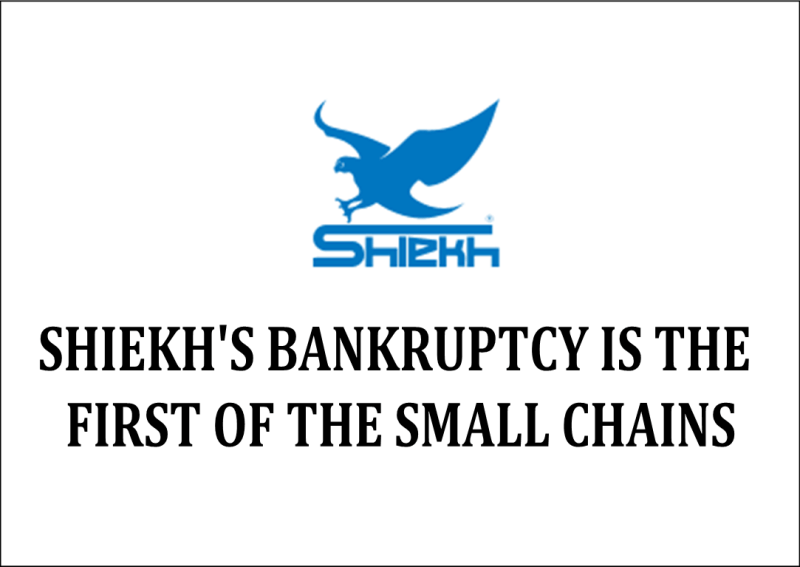![]()
When The Sports Authority went into bankruptcy it shook the sneaker world. The chains owed Nike and Under Armour money and the absence of the retail outlet shook the sneaker industry for almost three years. Other retail outlets have filed for bankruptcy, but the recent filing by Shiekh Shoes is a direct response to what I’ve been detailing since Nike began shifting to DTC in 2012.
While most see the Consumer Direct Offense as a new thing for Nike, it actually began in earnest in 2011 and 2012 when Nike began to push NDC in the ecommerce world. I discussed this in a post on Amazon and Nike recently. While I now realize that Nike isn’t really going to use Amazon the way I thought, the information in this post is very relevant:
2 Reasons Nike Selling On Amazon Will Disrupt Foot Locker, Finish Line and Other Retail Outlets
If you don’t feel like clicking through here is the summary of what I wrote:
A few years ago a battle began for where customers are searching for products to purchase online. This battle is taking place between Amazon and Google. Other sites are barely scratching the surface in search and this limits their reach to consumers looking to buy what they have. Let’s look at Foot Locker. From 2007 to 2016 they increased their ecommerce/DTC sales from 6.6 million to 944 million in 2016. On the surface that looks great, but Nike hadn’t begun a full investment into growing DTC/ecommerce until around 2014. They really only started to push ecommerce in 2012.
In 2014 Foot Locker’s ecommerce sales were 842.3 million. Nike has since ramped up investment in DTC. The growth of Foot Locker’s DTC from 07-14 has continued, but appears to have plateaued. From 2014 to 2016 Foot Locker basically grew ecommerce 6% each year, which isn’t bad. In comparison Nike in 2014 saw a 42% increase in web sales at 767 million.
In 2015 Nike did an estimated 1.2 billion in ecommerce.
What do these numbers have to do with Amazon search? When people begin a search for products, specifically footwear and apparel, they don’t go to Nike’s wholesale accounts (Foot Locker, Hibbett, Finish Line, etc). They either go to Google or Amazon. The growth of Nike’s ecommerce from 2012 to the present shows that when people search for Nike, they will use the Nike website more than they will the retail outlets. Nike has already disrupted the growth of ecommerce for their wholesale partners with their push to DTC.
What exactly is the “Nike Wall”? In footwear, retail stores are obviously made up of walls of shoes. When you walk into certain retail outlets brands are given space on the wall typically based on the sales growth. If a brand is hot, they get the spot at the front of the wall where browsers can see the shoes and potentially shop. This is why in outlets owned by the brand the shoes aren’t even at the front of the stores. The brand doesn’t need to attract you to the shoes, their shoes are the only ones there. In traditional retail footwear sells faster than apparel so stores display footwear.
When you walk past most Shiekh Shoes or if you walk by any retail outlet you are going to see Nike footwear. It’s only natural; the brand owns 50% of the market. However with a company like Foot Locker who had a better Q3 than expected you will see other brands as Foot Locker shifted Nike Basketball and Sportswear from the front of the store to the back. adidas now controls the front wall.
In stores like Shiekh, City Gear, DTLR and Jimmy Jazz, Nike dominates the inventory. The lack of diversity has hurt all of these stores and Nike’s CDO isn’t going to help to correct it even as Nike begins to scale back production of footwear and make items more limited. I’ve said over and over that the next chain to succumb to the Nike Wall would be City Gear. Memphis only has one Shiekh Store and that location never was able to carry Nike shoes because it was in the mall directly across from City Gear. I forgot all about Shiekh Shoes, but this is the natural progression. DTLR and Sneaker Villa offset this issue by joining forces:
The only way the Nike Wall doesn’t hit City Gear next is if the chain aligns with Jimmy Jazz or another chain. I hate to see the closure of stores. Someone is out of work and I know how that feels, but I expect more of this as Nike ramps up their CDO conversion.
Note: Yesterday I wrote a short post on Amazon Cash. This is a direct attack on smaller chains and will shape retail as the underbanked population has never had access or the ability to purchase on Amazon. The Latino and Black populations which dominate the Unbanked and Underbanked will now have access to Amazon’s platform. While these communities have been absent from brick and mortar and they may not be as “well off” they all have phones and they all now have the ability to use Amazon and that could be a bigger threat than Nike CDO.
How Amazon Plans To Reach Those Who Use Cash to Buy Kicks | Amazon Cash


